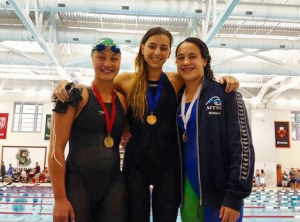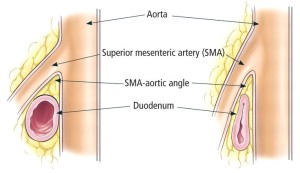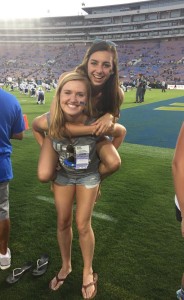As I stepped on the scale looked down at the little digits that were quickly calculating my weight, they finally stopped on barely a three digit number.
That’s when I knew I was in trouble, that’s when I knew that I was on the brink of death, and that’s also when I started to see black specs in my vision as I walked hurriedly to my room so that I could sit down. However, right as I was taking steps into my room, my vision completely gave out and so did my body. My head felt light and my legs weak. The last thing I remember was feeling a deep thud as I collapsed limply on the floor.
I had always been athletic. Ever since I was little I always loved being active and doing sports. But it wasn’t until my brother, Ryan, joined the swim team that I tried out swimming and fell in love with it. Just like most kids at the age of seven, I was only doing swimming for fun. I didn’t think of it as competitive or hard. I was just there for the people and the pure joy of being weightless in the water.
As I grew older I started thinking of it more as a lifestyle and a career. Although, it wasn’t until I was fourteen-years-old that swimming started to mean more to me. That realization came when I made my first two Olympic Trials cuts in the 100m and 200m backstroke.

I was ecstatic to go to Omaha in 2012 and finally get to see my childhood role models compete. I also swam really well. I placed 16th in the 100 backstroke and made it back to Semi Finals. I also placed 17th in the 200 backstroke. After Trials, I was on fire for swimming. I wanted to do it for as long as my body willed.
However, that fire slowly started to dim and it became more like a single flame.
My races at the Olympic Trials started to seem more like a memory than reality. Then my swim team split and I was left with three of my friends and a bunch of little kids to practice with. Showing up to the pool became more and more daunting and I became aggravated with my times as well as my strokes. I wanted to quit swimming and take up something else.
I was done with the nine practices a week, three dryland workouts a week, and not being able to hang out with my non-swimming friends because of my demanding schedule. After two more years, when I was sixteen, my plan was to take a break from swimming for one summer so that I can get my head on straight. However, God apparently had other plans because in early March of the same year I started to get ill. Little by little I started to throw up more and more of whatever I ate or drank. After a week of what I thought was the Flu, it became more than clear that it was something else.
My parents kept a sharp eye on me to make sure I was getting enough nutrients but I wasn’t. At this point I was keeping little to nothing down and I would lost two pounds a day, every day for almost a week before we said “enough.” I was checked into Mass General Hospital in Boston the next day where they repeatedly ran tests on me trying to figure out what was the cause of my constant vomiting. After being poked and prodded for five days, they were convinced I was a head case. That wasn’t good enough for my parents though.
They believed that it wasn’t in my head as much as I knew it wasn’t either.
A week later we transferred to Tuft’s Floating Hospital in Boston. I had to do all of the same five tests over again to get new perspectives. Finally, after the last test they diagnosed me with an extremely rare disorder called Superior Mesenteric Artery Syndrome (SMA Syndrome). As you can see in the picture, it’s where there is an obstruction of the bowel so no food or water can go past the problem area to digest.

The course of treatment was not going to be easy. One of the most successful ways to cure it would be to bypass the obstruction by making two openings in my intestines before the obstruction and suture them together so that when food goes to digest it goes straight down to the lower level rather than having to go through the blocked off area. It is such an invasive surgery though, that my doctor (Dr. Khoa Tran) saw it best to exhaust our resources before going through with the surgery. And so the long journey began.
For the first few months I had four different NJ tubes placed into my intestine so that I could get nutrients. They quickly failed within 3-5 days however, because I would throw up the tube and it would come out of place from my intestine, coiling up inside of my stomach instead. We would then have to pull it out and place a new one down my nose again later in the week.
On top of the feeding tube placements, they also did a couple of endoscopies where they stuck a scope down my throat so they could get a look at my obstruction. I lost more and more weight as I was still unable to hold down any kind of liquid or solid food. I was basically unintentionally starving myself to death and had lost thirty pounds from my already skinny figure.
After more NJ tubes, endoscopies, and even a long term IV that I had in for seven weeks, I grew reasonably tired. I would spend more and more of my days lying in bed watching Netflix than I would be hanging out with my friends. I binge watched TV shows and went through a book a week. Even lying down was a chore though. I started sleeping more and more, unable to get up at times because of how fatigued and malnourished my body was. And the times that I did get up to take a shower or try to drink something, which would later be flushed down a toilet, I would get dizzy and light headed so quickly that even after I walked down the stairs I would have to sit down and rest.
Eventually after trying multiple medications and months of trial and error, we saw it fit that I go ahead and get the invasive surgery.
It went extremely well and my surgeon, Dr. Carl-Christian A. Jackson sutured everything perfectly. All that was left was me to stay in the hospital for a week to be monitored and then I was free to go home and start on a clear liquid diet as I worked my way back to normal food.
When I got discharged from the hospital, the first couple of days were really good. I ate small portions of food and started to feel better but right when we thought I was back to normal I started to throw up more and more all over again. Feeling defeated and a bit annoyed, we went back to the hospital to get an endoscopy so that we could have a visual of what was going on. Sure enough, the hole that they had made closed up completely. It was as if I never had the surgery in the first place.
The course of action was a little easier this time at least. I had to go into the hospital every two weeks for two months and get a surgical endoscopy so that they could dilate the opening in hopes of getting it back to where they had it after surgery.
 After a long process and 14 months of in-patient and out-patient hospital visits, I was finally starting to get better. I had to make subtle changes to my diet like fewer gluten items and foods that were easier to digest but I’m happy and more than proud to say that since late May of 2015, I have been back in the pool with a new appreciation for the sport.
After a long process and 14 months of in-patient and out-patient hospital visits, I was finally starting to get better. I had to make subtle changes to my diet like fewer gluten items and foods that were easier to digest but I’m happy and more than proud to say that since late May of 2015, I have been back in the pool with a new appreciation for the sport.
In fact I qualified for Olympic Trials in the 100m and 200m Backstroke once again last month and have been swimming personal best times in all of my events. I think, and strongly believe, that it is crucial in every person’s life to have a strong family and/or friend group that will support you through hard times.
One of the other major problems that I had throughout my journey was I bottled up my emotions inside of me and put on a smile so that everyone else was okay except for me. But that just killed me from the inside out. Eventually my feelings tore through and it was way worse than it would’ve been had I had talked to my close friends or family about how I was feeling.
Going through anything, no matter how small it may seem to you, it is always important to let people know how you feel. Without the love and care that my friends and family gave me throughout those fourteen daunting months, I wouldn’t have made it out whole on the other side, let alone made it out in the first place.




